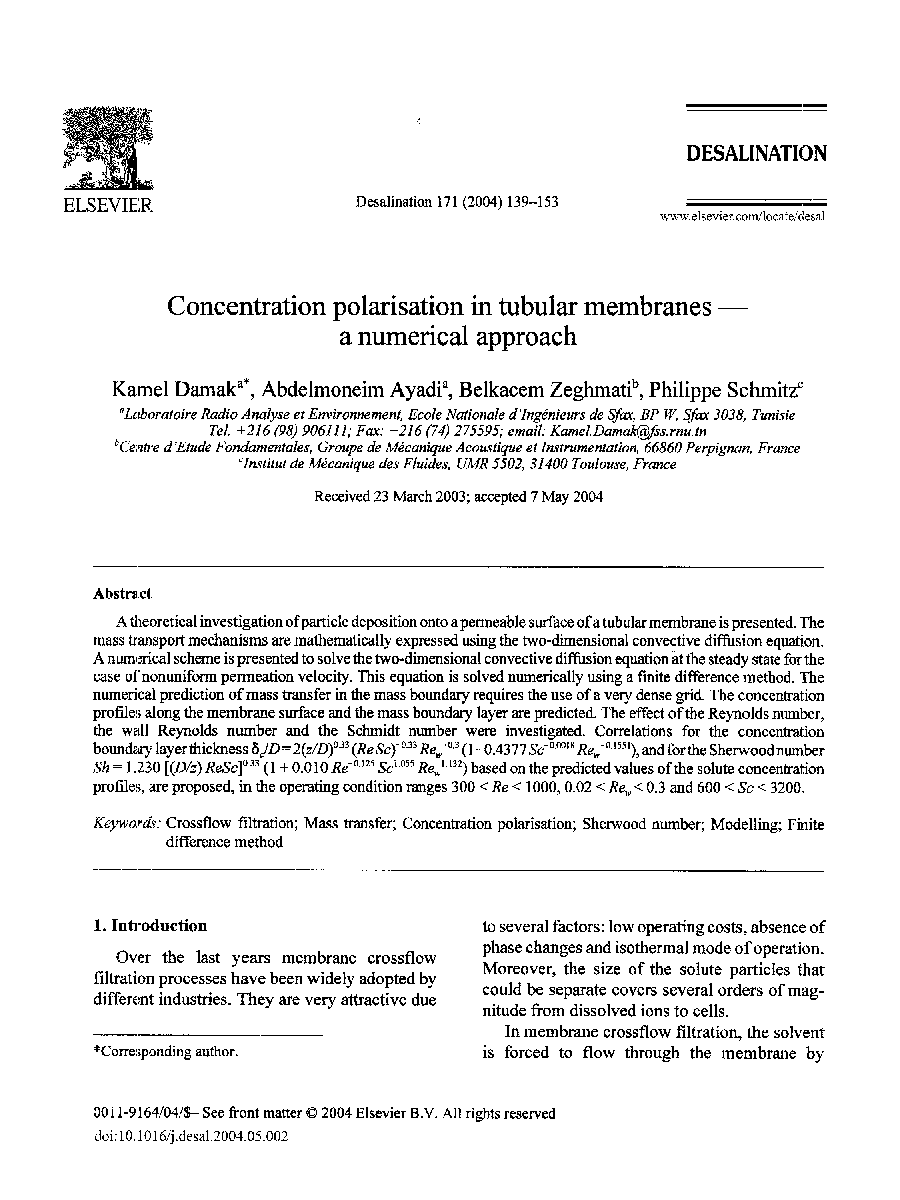| Article ID | Journal | Published Year | Pages | File Type |
|---|---|---|---|---|
| 10386344 | Desalination | 2005 | 15 Pages |
Abstract
A theoretical investigation ofparticle deposition onto a permeable surface of a tubular membrane is presented. Themass transport mechanisms are mathematically expressed using the two-dimensional convective diffusion equation. A numerical scheme is presented to solve the two-dimensional convective diffusion equation at the steady state for the case of nonuniform permeation velocity. This equation is solved numerically using a finite difference method. The numerical prediction of mass transfer in the mass boundary requires the use of a very dense grid. The concentration profiles along the membrane surface and the mass boundary layer are predicted. The effect of the Reynolds number, the wall Reynolds number and the Schmidt number were investigated. Correlations for the concentration boundary layer thickness δc/D=2(z/D)0.33(ReSc)â 0.33 Rewâ0.3 (1-0.4377 Scâ0.0018 Rewâ0.1551), and for the Sherwood number Sh =1.230 [(D/z) ReSc] 0.33 (1 + 0.010 Reâ0.125Sc1.055 Rew.1.132) based on the predicted values of the solute concentration profiles, are proposed, in the operating condition ranges 300 < Re < 1000, 0.02 < Rew < 0.3 and 600 < Sc < 3200.
Keywords
Related Topics
Physical Sciences and Engineering
Chemical Engineering
Filtration and Separation
Authors
Kamel Damak, Abdelmoneim Ayadi, Belkacem Zeghmati, Philippe Schmitz,
